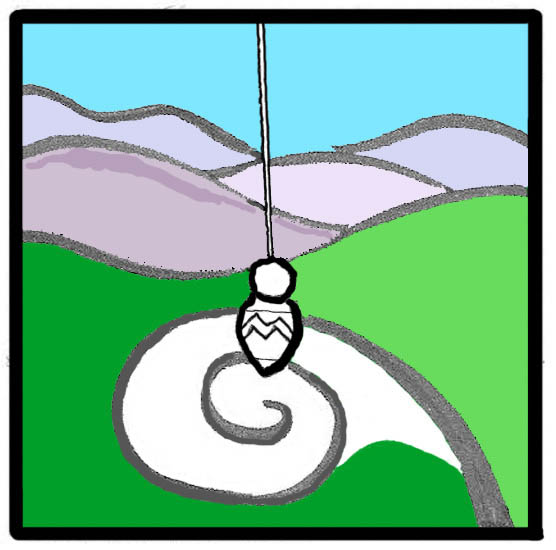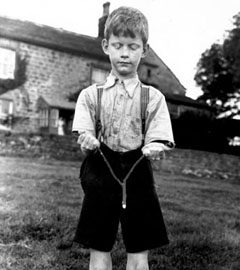January 30, 2008
Author: Mark Vanderhoff, Bold Life,
Ask people if they know what dowsing is, and they will likely return a blank stare. Describe the image of an old-timer waving a forked stick across the ground in search of water, and they’ll likely say, “Oh yeah. I didn’t know that was called dowsing.”
Turns out there’s a lot about dowsing people don’t know.
For one, they may not know the practice is alive and well, with 57 chapters of the American Society of Dowsers spread across the country and more in Canada, Europe and Australia. For another, practitioners say dowsing can help heal the sick, find metals and minerals underground, and guide people’s life decisions.
“Finding water is just the first step,” says Lee Barnes, director of the Appalachian Chapter of the American Society of Dowsers and a Waynesville-based real estate broker and land stewardship consultant.
According to practitioners, dowsing facilitates communication between the subconscious mind and energy fields [that exist all around us]. Dowsers contend that people, especially those from the Western Civilization, have simply forgotten how to tap into their subconscious. The forked stick — or more often an L-shaped rod — simply acts as a vessel through which our subconscious minds can communicate with the world around us.
What do scientists say? According to the U.S. Geological Survey website, when dowsers appear to be successful it’s because “…in many areas water would be hard to miss. In a region of adequate rainfall and favorable geology, it is difficult not to drill and find water!”
None of which means much to a committed dowser. Personal experience and gut instinct are key to their experience.
Barnes, for instance, spent time backpacking in the Rocky Mountains in the early 1980s.
He set out one morning to hike as usual, but something in the back of his mind told him that he should be careful: he ignored this little voice. He promptly slid down the mountain and nearly killed himself. “My intuition was telling me something, but I wasn’t listening to it,” Barnes says.
Barnes’ nascent desire to commune with his inner voice dovetailed with his newfound interest in dowsing. These days, Barnes dowses to watch out for bears while backpacking and to detect speed traps on the highway. He also uses his skill to find water for wells and in his land consulting business.
 Richard Crutchfield, president of the local chapter, now lives in Asheville. But in 1988, his marriage broke up, he left his job as a professor in Boone, and he was suffering from a chronic yeast infection of the digestive tract. “I was having a real mid-life crisis,” he says.
Richard Crutchfield, president of the local chapter, now lives in Asheville. But in 1988, his marriage broke up, he left his job as a professor in Boone, and he was suffering from a chronic yeast infection of the digestive tract. “I was having a real mid-life crisis,” he says.
The idyllic home he rented in Black Mountain sat on the golf course and he was undergoing intense homeopathic treatment, so his life should have been on an upward trajectory. Unfortunately, he was getting worse, not better.
That’s when somebody recommended Crutchfield bring a dowser to examine his residence. As it turns out, severe geomagnetic stress from geologic fault lines and underground water movement beneath the abode were foiling Crutchfield’s homeopathic treatment. “He (the dowser) said it was the worst house he’d ever dowsed,” Crutchfield says.
When Crutchfield moved out of the home, the treatment began to work, and he eventually recovered. He learned to dowse, and in addition to searching for water, he now “clears” houses like the one in which he once lived.
According to Crutchfield, underground water movement and the barely perceptible friction of fault lines create stressful energy fields. If a structure is placed above such a spot, the people living or working in that building can be negatively affected. Crutchfield said he not only detects the water and fault lines, but communicates with the energy they create and tries to move it away. “Everything is energy,” he says. “You can affect other energy fields with your own.”
The mechanics of dowsing are simple and the physical requirements are few. Basically, you need a dowsing rod. Dowsing rods have been made from all sorts of material, but the classic approach is the forked stick made from a tree or a bush. To make your own, cut a fork about 20 inches long. The trick is to fashion a fork limber enough to be responsive and stiff enough to offer adequate resistance.
Sam Richardson calls the practice “mind of matter.” He says everyone is capable of learning to dowse. “We teach in dowsing that 95 percent of people can learn to dowse,” he says. “The other five percent don’t believe they can, so they can’t.”
Richard Crutchfield

